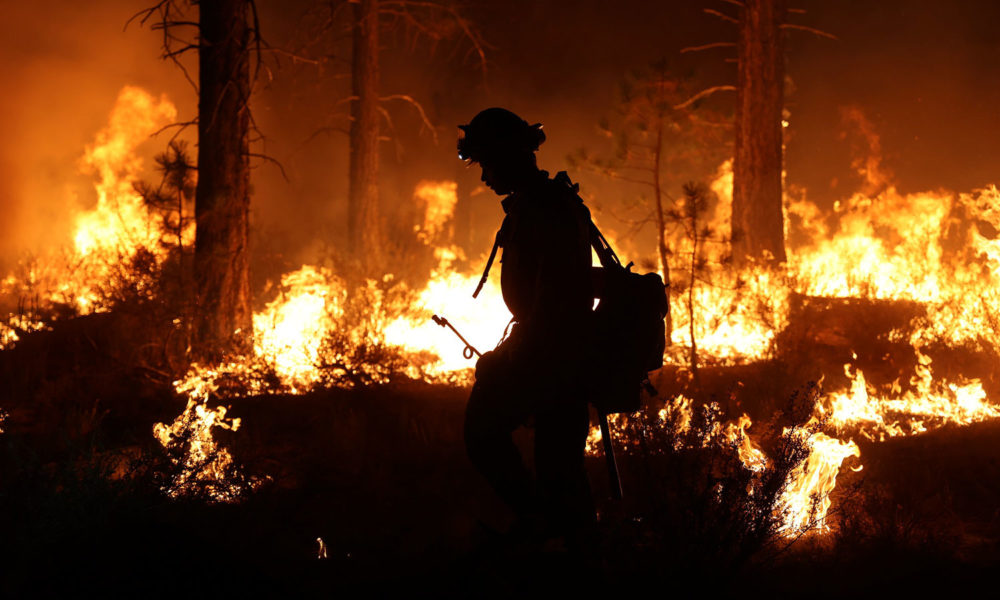Over the past few weeks, wildfires and rain in California have drawn attention to the threat that increasingly large and severe wildfires pose to our vulnerable water resources.
During the first week of August, intense rain on the burn scar of 2021’s Tamarack Fire led to a partial closure of Highway 89 and sent flowing mud and debris, like logs, rocks, and gravel, through the town of Markleeville, just south of Lake Tahoe. At the time of this writing, the highway remained closed and there was no estimated reopening date. Another recent rain storm on the actively burning McKinney Fire near the California-Oregon border slowed the progression of the explosive wildfire, but complicated suppression efforts due to mudslides and flash flooding. The McKinney Fire is California’s largest wildfire in 2022, burning over 60,000 acres and killing 4 people. As of August 15, the fire is 95 percent contained.
As wildfires continue to increase in size and severity with climate warming, communities and policymakers can take steps to minimize the impact that wildfires have on their water supplies.
How do wildfires increase the risk of mudslides and flash floods?
In an unburned ecosystem, the roots of plants and trees absorb water and stabilize soil. When an area burns at high severity, killing more than 90 percent of vegetation, these stabilizing effects are lost, meaning more water runs off through the ecosystem, and loose soil is able to flow with it. Burned soil can also become water repellant, which translates to a higher risk of flash floods, mudslides and debris flows.
How can runoff impact our environment and infrastructure?
A surge of water and sediment can lead to devastating consequences across our ecosystems. Runoff from the McKinney Fire reduced oxygen concentrations and decimated fish populations in the Klamath River, an important habitat for salmon. Gauges used by the Karuk Tribe measured no oxygen in the river for two nights in a row following the debris flow.
Events like this can also signal trouble for communities who rely on rivers and streams for drinking water.
In Markleeville, surface water in streams and creeks became unusable due to high sediment loads, forcing the community to source water exclusively from groundwater wells, which substantially reduces their water availability. While this change in water sourcing is likely temporary, it has led to water use restrictions around the community.
What can we do about it?
Wildfires threaten water resources for millions of people, but communities and policymakers can take action to reduce their risk. The recently passed Inflation Reduction Act included $5 billion to reduce wildfire risk through investments in forest health projects and firefighting capacity in rural communities. Communities can diversify their water sources and invest in sediment barriers and removal capacity at water treatment facilities. We can also treat forests to reduce the risk of high-severity wildfires by removing built-up vegetation through thinning and prescribed burning, which does not have the same negative consequences for water quality as high severity wildfire.
At a broader scale, we also must reduce the amount of heat-trapping gases we release to the atmosphere to slow the progression of climate change, which is fueling increasingly severe wildfires.

